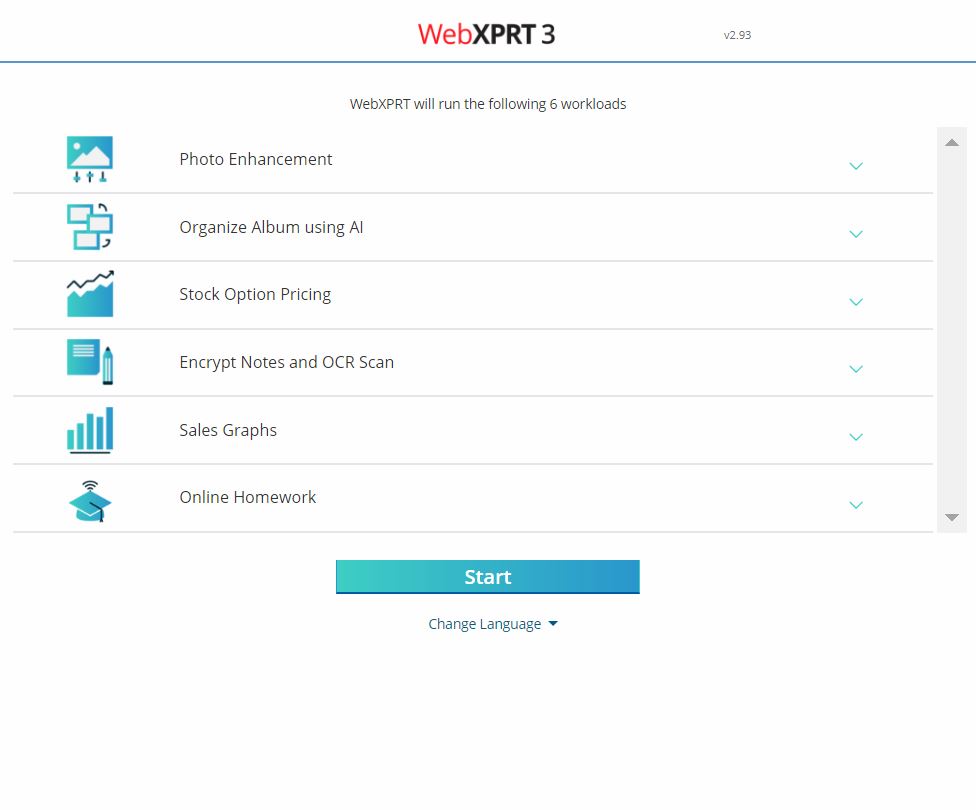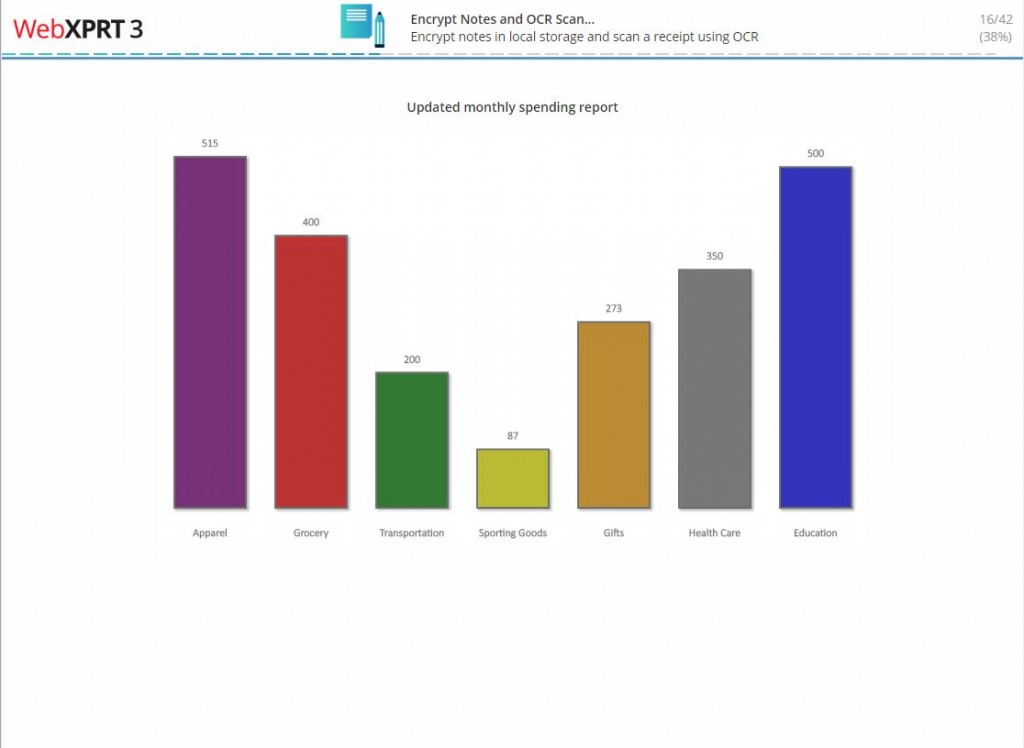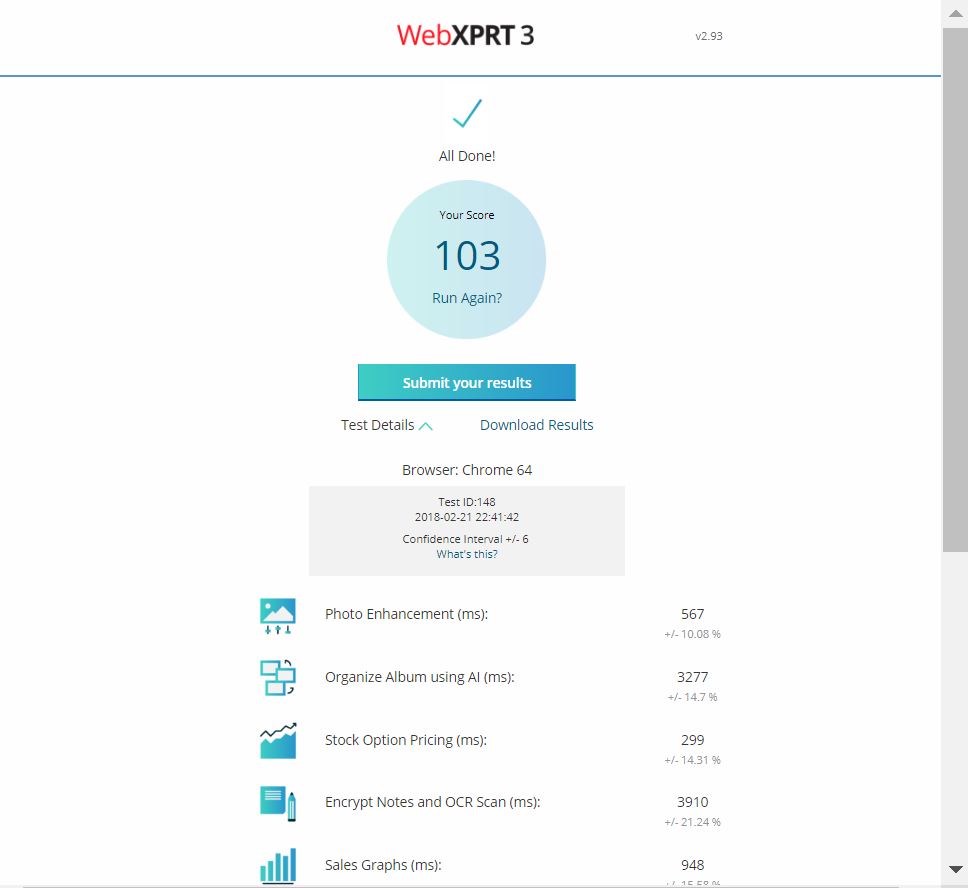After much development work and testing, we’re happy to report that we’ll be releasing WebXPRT 3 early next week!
Here are the final workload names and descriptions.
1) Photo Enhancement: Applies three effects to two photos each using Canvas.
2) Organize Album Using AI: Detects faces and classifies images using the ConvNetJS neural network library.
3) Stock Option Pricing: Calculates and displays graphics views of a stock portfolio using Canvas, SVG, and dygraphs.js.
4) Encrypt Notes and OCR Scan: Encrypts notes in local storage and scans a receipt using optical character recognition.
5) Sales Graphs: Calculates and displays multiple views of sales data using InfoVis and d3.js.
6) Online Homework: Performs science and English homework using Web Workers and Typo.js spell check.
As we mentioned in an earlier blog post, the updated photo workloads contain new images and a deep learning task. We also added an optical character recognition task to the Local Notes workload and combined part of the DNA Sequence Analysis scenario with a writing sample/spell check scenario to simulate online homework in the new Online Homework workload.
Longtime WebXPRT users will immediately notice a completely new UI. We worked to improve the UI’s appearance on smaller devices such as phones and we think testers will find it easier to navigate.
Testers can still choose to run individual workloads and we’re once again offering English, German, and Simplified Chinese language options.
Below my sig, I’ve included pictures of WebXPRT 3’s start test and results pages, as well as an in-test screen capture.
We’re thankful for all the interest in WebXPRT 3 so far and believe the new version of WebXPRT will be as relevant and reliable as WebXPRT 2013 and 2015—and easier to use. We look forward to seeing new results submissions next week!
Justin















